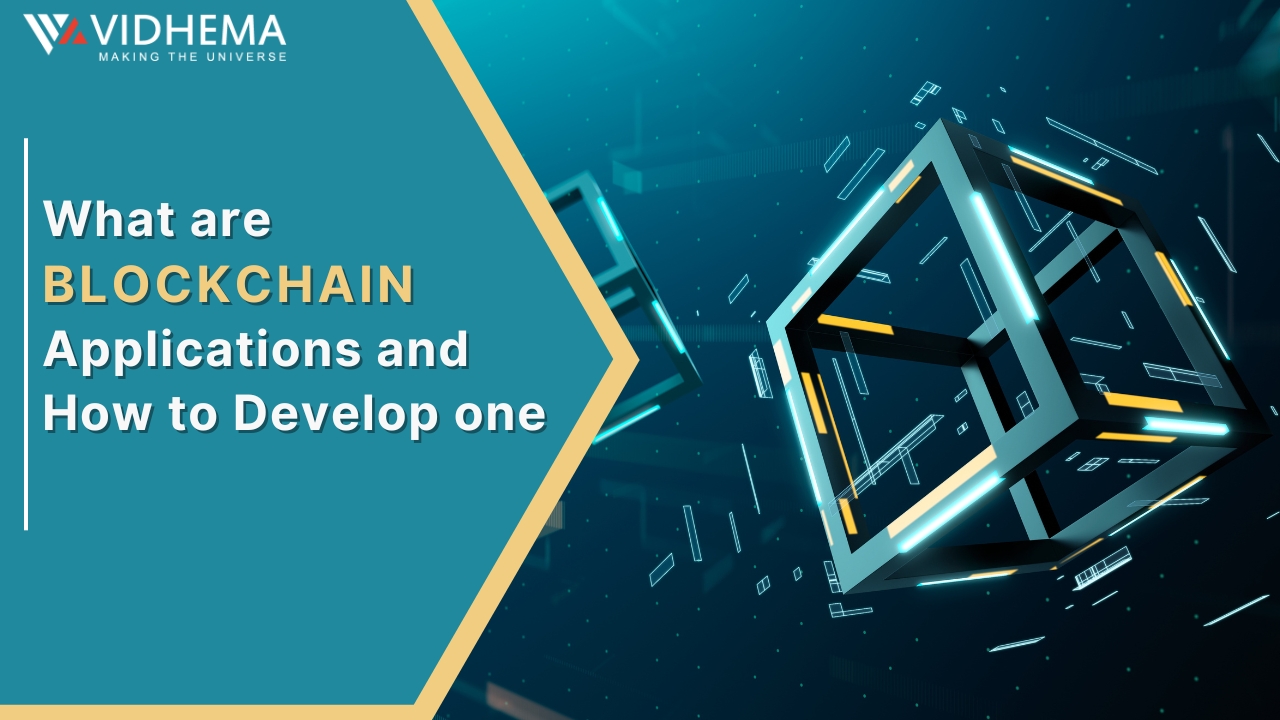Blockchain technology has brought about a significant transformation across various industries, presenting exciting opportunities for secure, transparent, and decentralized applications. With applications ranging from finance and healthcare to supply chain management and voting systems, blockchain is revolutionizing traditional processes. In this blog post, we will delve into the world of blockchain applications, exploring their concept, advantages, and potential use cases across different sectors. Furthermore, we will provide insights into the development process, highlighting the essential steps and considerations involved in creating a blockchain application. Whether you're a business owner seeking to harness the power of blockchain or a developer interested in building blockchain-based solutions, this guide aims to equip you with valuable knowledge to navigate the dynamic landscape of blockchain development.
What are blockchain apps, or DApps?
Blockchain apps, or decentralized applications (DApps), are software applications built on a blockchain network. DApps leverage the decentralized nature of blockchain technology to provide transparency, security, and trustworthiness. Unlike traditional apps that rely on centralized servers, DApps operate on a distributed network, allowing for peer-to-peer interactions without intermediaries. They use smart contracts to automate processes and ensure immutability of data. DApps have diverse use cases, including finance, supply chain management, gaming, social media, and more. By harnessing blockchain's unique features, DApps are paving the way for a new era of decentralized and innovative applications that empower individuals and businesses alike.
How does a blockchain application work?
Blockchain applications function on a decentralized network of computers called nodes. These nodes collaborate to maintain a shared and unchangeable ledger of transactions. The process involves several key steps:
1. Decentralized Network:
Blockchain applications operate on a network of nodes, rather than relying on a single central authority.
2. Transactions:
Users initiate transactions by submitting them to the network. These transactions can represent various types of data, such as financial transfers or asset ownership.
3. Validation:
Participating nodes verify the authenticity of each transaction, ensuring it adheres to predefined rules. This verification process guarantees the integrity of the network.
4. Block Formation:
Validated transactions are grouped into blocks, with each block containing a reference to the previous one, creating a chain of blocks known as the blockchain.
5. Consensus Mechanism:
Consensus mechanisms, such as Proof-of-Work (PoW) or Proof-of-Stake (PoS), ensure agreement among nodes regarding the validity and order of blocks.
6. Distributed Ledger:
The validated blocks are added to a distributed ledger, which is replicated across all nodes in the network. This ledger maintains a transparent and tamper-proof record of all transactions.
7. Smart Contracts:
Many blockchain applications utilize smart contracts, which are self-executing agreements with predefined conditions. Smart contracts automate actions based on specific triggers, eliminating the need for intermediaries.
8. Security and Immutability:
The decentralized nature of blockchain ensures enhanced security and data integrity. Once a transaction is added to the blockchain, it becomes nearly impossible to alter or manipulate past records.
9. User Interactions:
Users interact with the blockchain application through user interfaces or APIs, allowing them to perform transactions, access data, or execute actions based on the application's functionality.
By utilizing decentralized networks, consensus mechanisms, and smart contracts, blockchain development provide a transparent, secure, and reliable infrastructure for various use cases, empowering users with greater control and trust over their transactions and data.
Benefits of blockchain apps
1. Decentralization and Transparency:
Blockchain apps operate on decentralized networks, eliminating the need for intermediaries. This decentralization ensures transparency, as all participants have access to the same information, reducing the potential for fraud or manipulation.
2. Enhanced Security:
Blockchain apps utilize cryptographic techniques to secure transactions and data. The decentralized nature of the blockchain network, combined with encryption, makes it extremely difficult for unauthorized entities to tamper with or compromise the stored information.
3. Immutable and Auditable Records:
Transactions recorded on a blockchain are permanent and cannot be altered. This immutability creates a reliable audit trail, making blockchain apps ideal for applications requiring accurate and tamper-proof records, such as supply chain management or financial transactions.
4. Efficiency and Cost Savings:
By removing intermediaries and automating processes through smart contracts, blockchain apps streamline operations, reduce paperwork, and minimize the need for manual verification. This leads to increased efficiency and potential cost savings for businesses.
5. Trust and Integrity:
Blockchain apps instill trust among participants by providing a transparent and verifiable system. The consensus mechanisms and cryptographic algorithms used in blockchain ensure that all participants agree on the validity of transactions, promoting trust and integrity in the network.
How to build a blockchain app
Building a blockchain app requires careful planning, understanding of blockchain technology, and proficiency in programming languages. Here is a step-by-step guide to help you get started:
1. Define the Purpose and Requirements:
Clearly define the purpose of your blockchain app and the problem it aims to solve. Identify the specific features, functionalities, and user interactions required.
2. Choose the Right Blockchain Platform:
Select a suitable blockchain platform that aligns with your app's requirements. Popular choices include Ethereum, Hyperledger Fabric, and EOS, each offering unique advantages and use cases.
3. Design the Architecture:
Create a high-level architectural design for your app, outlining the components, data structures, and interactions between the blockchain and the app's frontend and backend.
4. Develop Smart Contracts:
Smart contracts are self-executing code that automate transactions and enforce business logic on the blockchain. Use languages like Solidity (for Ethereum) to write smart contracts tailored to your app's requirements.
5. Build the Backend:
Develop the backend infrastructure to interact with the blockchain. This involves connecting to the chosen blockchain platform, deploying smart contracts, and managing interactions between the app and the blockchain.
6. Develop the Frontend:
Create an intuitive and user-friendly frontend interface for your blockchain app. Utilize web development frameworks such as React, Angular, or Vue.js to build a responsive and interactive user interface.
7. Test and Deploy:
Thoroughly test your blockchain app for functionality, security, and performance. Conduct unit tests for smart contracts and integration tests for the overall app. Once testing is complete, deploy the app on the chosen blockchain platform.
8. Ensure Security:
Implement robust security measures, including encryption, access controls, and secure key management, to protect user data and transactions from unauthorized access.
9. Monitor and Maintain:
Continuously monitor the performance and security of your blockchain app. Stay updated with the latest blockchain developments and promptly address any vulnerabilities or issues that arise.
10. Iterate and Improve:
Gather user feedback, analyze app usage, and iterate on your app to enhance its functionality, user experience, and overall performance.
Frequently Asked Questions
A lot of people don't appreciate the moment until it’s passed. I'm not trying my hardest, and I'm not trying to do
To start blockchain development, it is important to first acquire a comprehensive understanding of blockchain technology. Educate yourself about various platforms such as Ethereum or Hyperledger Fabric. Get familiar with programming languages like Solidity. Engage in small-scale projects, participate in online communities, and contemplate enrolling in blockchain development courses or finding a mentor to guide you through the process.
Developing a blockchain app offers several advantages. Firstly, it enhances security by utilizing cryptographic techniques and decentralized networks. Secondly, it ensures transparency and eliminates the need for intermediaries in transactions. Additionally, blockchain apps provide immutable records, creating a reliable audit trail. By leveraging these benefits, blockchain apps have the potential to revolutionize industries, fostering innovation and trust in various sectors.
The cost of developing a blockchain app can vary greatly depending on several factors. The complexity of the app, the chosen blockchain platform, the required features, and the rates of the development team all contribute to the overall cost. As a result, the price can range from several thousand dollars to hundreds of thousands of dollars. It is important to carefully consider your project requirements and budget before proceeding with the development process.


